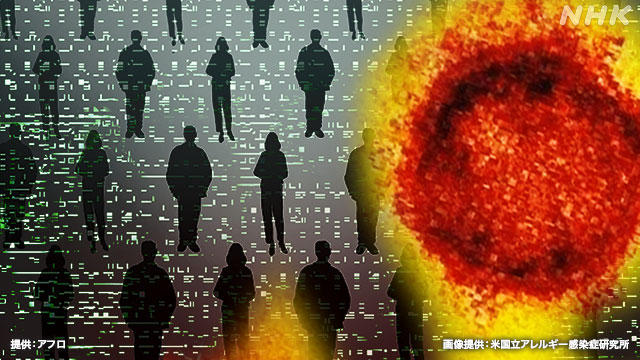The government's "New Coronavirus Infectious Disease Control Subcommittee" has put together a new idea that measures should be taken with a greater emphasis on the degree of medical strain.
The subcommittee states that the level of medical care will be determined by each prefecture, as the degree of tightness in medical care will differ from prefecture to prefecture.
In response to this, the Cabinet Secretariat decided to show two indicators for determining the level of prefectures: "load on medical care provision system" and "infection status".
Of these, the "load on the medical care provision system, etc." includes "use rate of secured beds", "usage rate of severely secured beds", "hospitalization rate" and its "compared to last week", and "number of severely ill patients" compared to last week. There are five items of "Transition".
In addition, "infection status" includes "positive rate of PCR test", "number of new positives" per 100,000 people, "number of new positives" "compared to last week" and "compared to last week", and "infection route". There are five items, "Percentage of unknown people".
As of November 29, the Cabinet Secretariat released data for six prefectures: Hokkaido, Tokyo, Aichi, Osaka, Fukuoka, and Okinawa.
"Load on medical care provision system, etc."
The first is the "load on the medical care provision system, etc."
▽ "Usage rate of secured beds" is:
・ 3% in Hokkaido
,
・
1% in Tokyo
,
・ 1% in
Aichi prefecture,
・ 2% in Osaka prefecture
,
・
1% in
Fukuoka prefecture,
・
1% in
Okinawa prefecture is.
▽ "Usage rate of severely ill beds" is:
・ 1% in Hokkaido
,
・
2% in Tokyo
,
・
0% in Aichi prefecture,
・ 1% in Osaka prefecture,
・ 2% in Fukuoka prefecture,
・ 0 in Okinawa prefecture %is.
▽ "Hospitalization rate" and its "compared to last week" are not applicable to all six prefectures announced by the Cabinet Secretariat.
See the end of the sentence for "not applicable".
▽ This is the "change in the number of severely ill people" compared to last week.
If the value continues to exceed 1, it indicates an increasing trend.
・ 1.08 times in Hokkaido,
0.76 times in Tokyo,
0.36 times in Aichi prefecture
, 0.60 times in Osaka
prefecture, 1.07 times in Fukuoka
prefecture, 0.00 times in Okinawa prefecture.
Infection status
次に「感染の状況」です。
▽最近1週間のPCR検査などの陽性率です。
・北海道で0.7%、
・東京都で0.3%、
・愛知県で0.2%、
・大阪府で0.1%、
・福岡県で0.2%、
・沖縄県で0.2%でした。
▽人口10万当たりの最近1週間の新規陽性者数です。
・北海道で2人、
・東京都で1人、
・愛知県で1人、
・大阪府で1人、
・福岡県で1人、
・沖縄県で1人でした。
▽次に新規陽性者数の先週比です。
数値が1を超える状態が続くと増加傾向にあることを示します。
・北海道で0.51倍、
・東京都で0.84倍、
・愛知県で1.00倍、
・大阪府で0.72倍、
・福岡県で0.69倍、
・沖縄県で1.38倍でした。
▽新規陽性者数の先々週比は、
・北海道で0.96倍、
・東京都で0.63倍、
・愛知県で0.76倍、
・大阪府で0.45倍、
・福岡県で0.98倍、
・沖縄県で0.65倍でした。
▽最後に感染経路が不明な人の割合です。
・北海道で35%、
・東京都で68%、
・愛知県で43%、
・ It was 53% in Osaka
prefecture, 56% in Fukuoka prefecture,
and 64% in Okinawa prefecture.
Not applicable
The government's "New Coronavirus Infectious Disease Control Subcommittee" states that the "hospitalization rate" index does not apply in the following cases.
▽ When the number of medical treatment is less than 10 per 100,000 population.
▽ When the number of new positives who need to be hospitalized has been hospitalized by the day after the notification of the outbreak.

